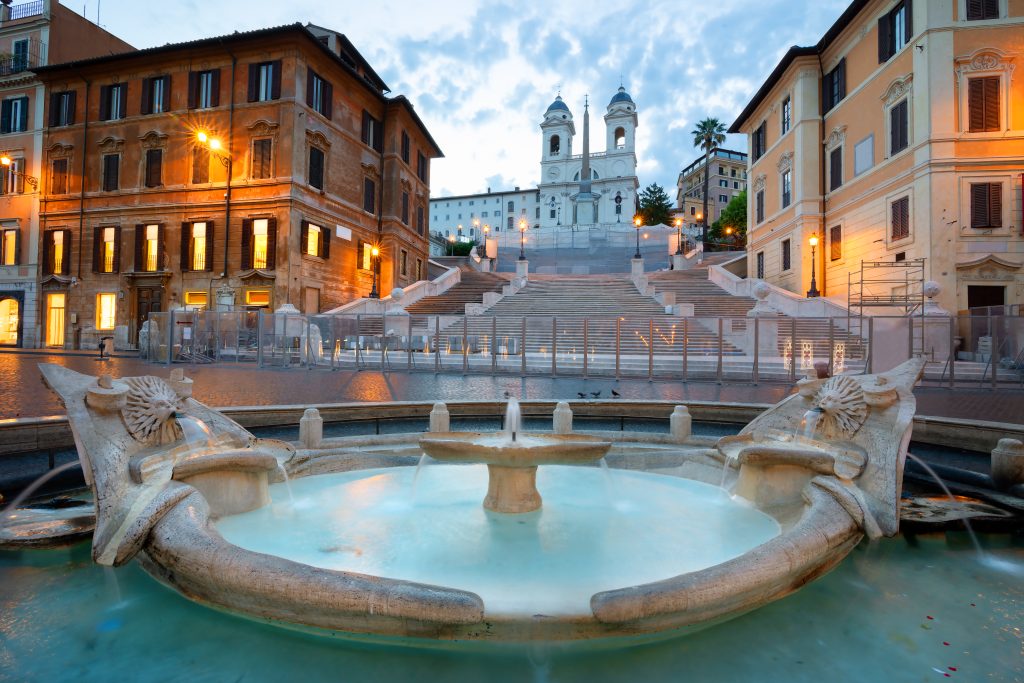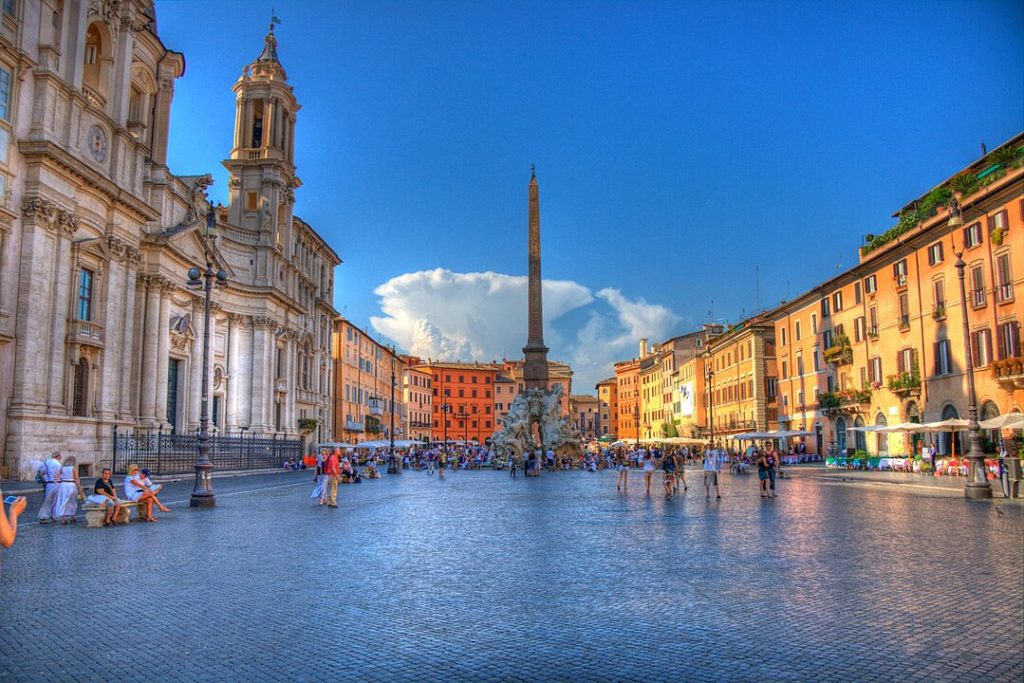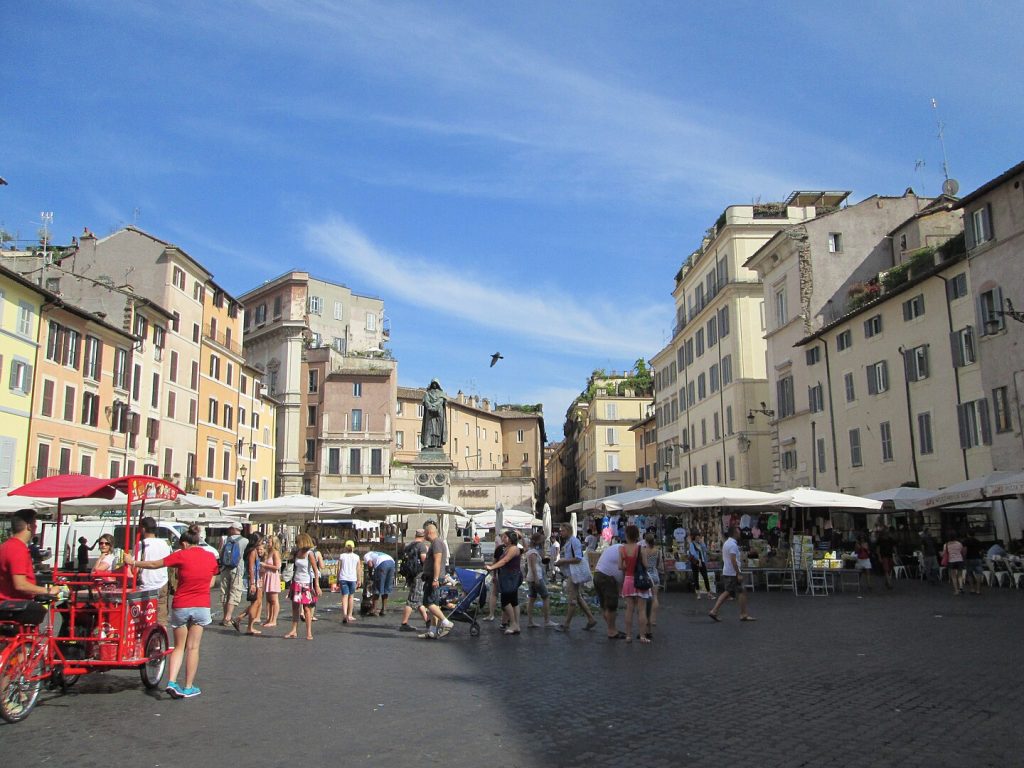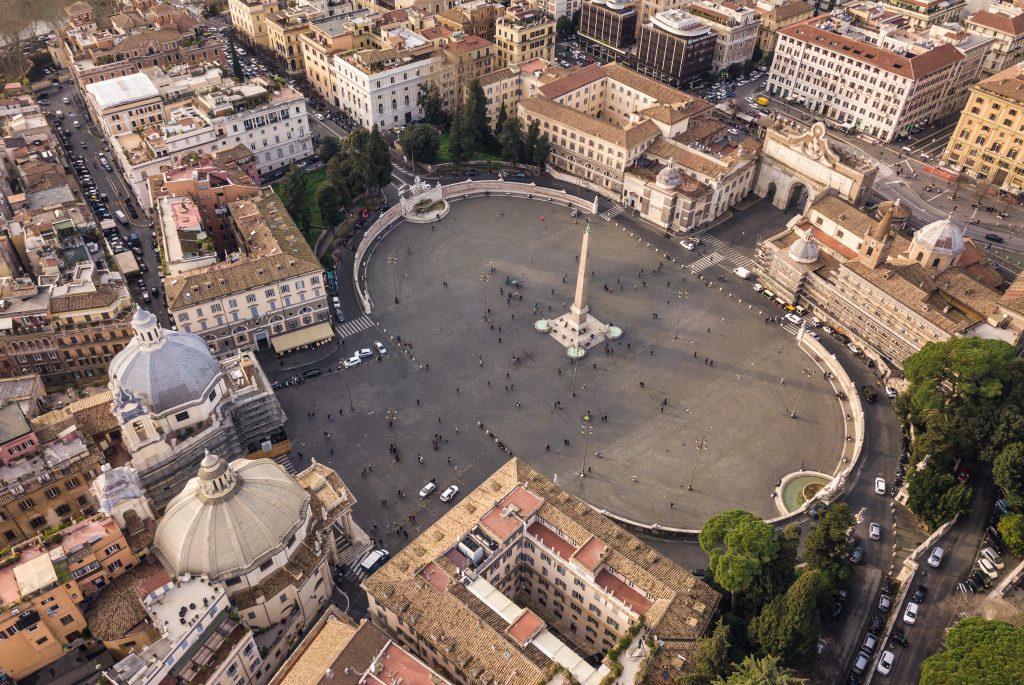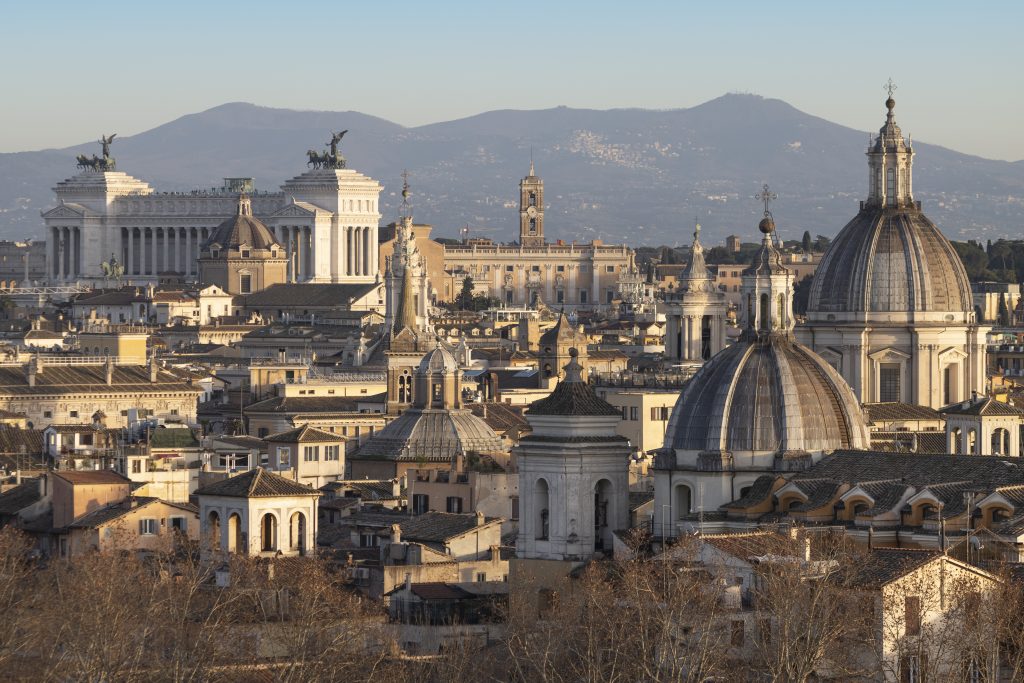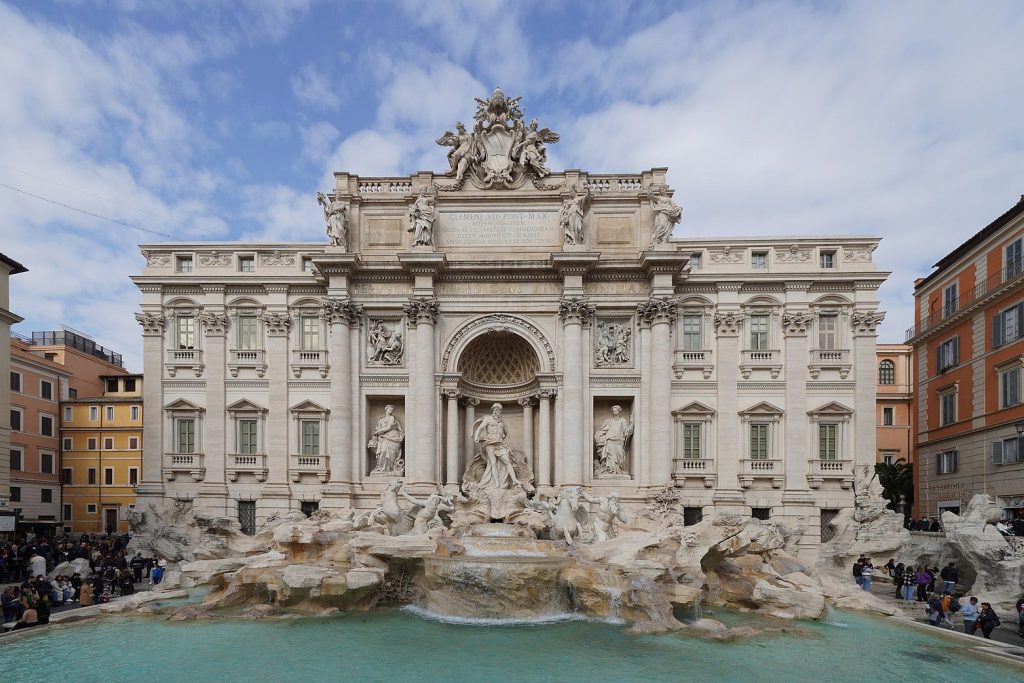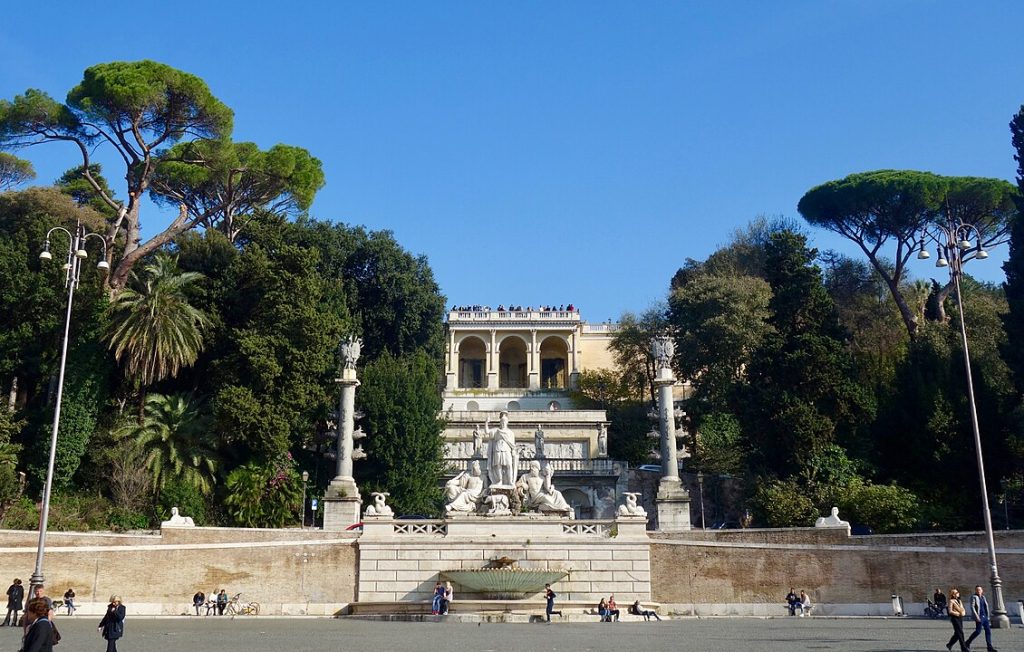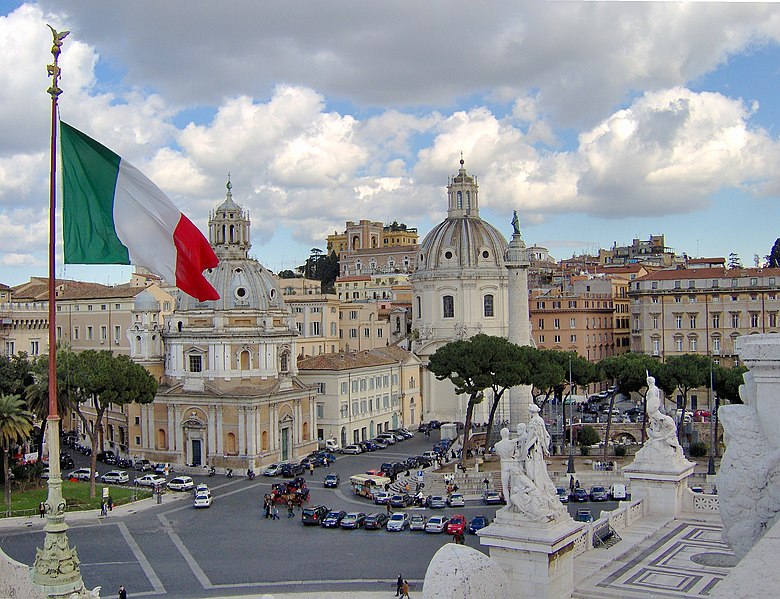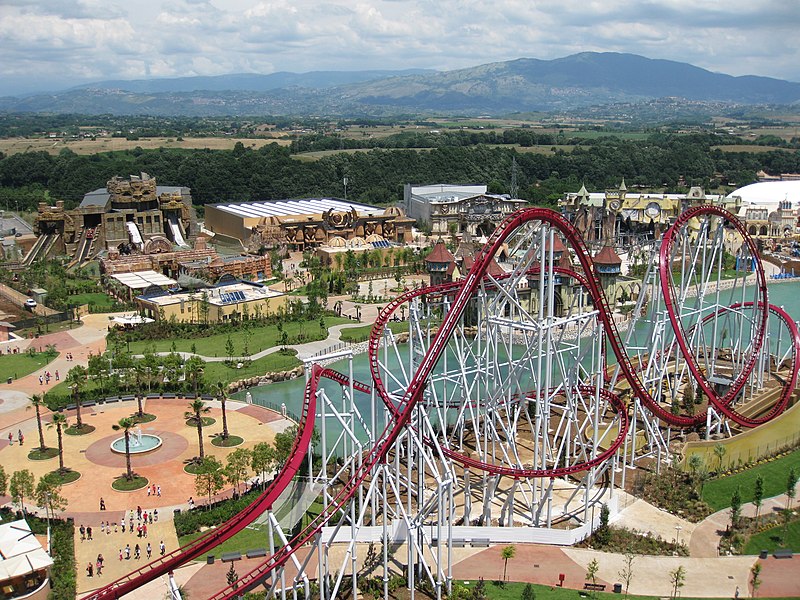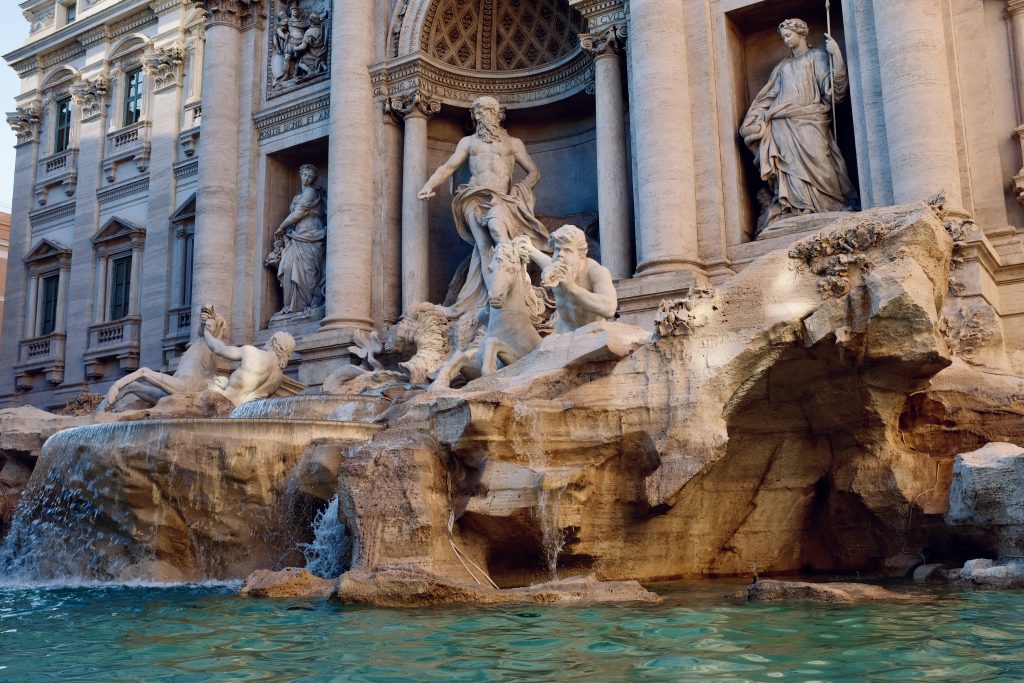
Trevi Fountain is not only Rome's most beautiful fountain, but also one of the most magical places in all of Italy. Delights with baroque architecture, the sound of water and the legend that says. Inserting a coin ensures a return to the Eternal City.
It is a place that combines history, romance and cinematic flair. Especially in the evening, when the illumination highlights every detail of the sculptures, the Trevi Fountain captivates like no other attraction in Rome. If you have to see only one place in this city - let it be this one.
1️⃣ History of the Trevi Fountain
Are you fascinated by history and great buildings?
👉 The Colosseum - 10 fascinating facts about the symbol of Rome
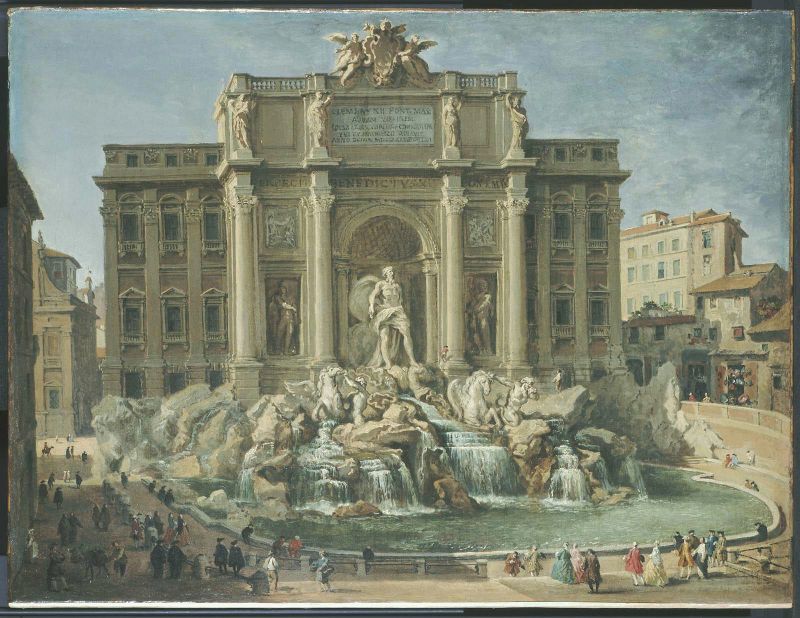
Although today the Trevi Fountain is one of Rome's most recognizable symbols, its history dates back to antiquity and tells the story of how water, art and the ambitions of popes shaped one of Europe's most iconic sites.
💠 From a Roman aqueduct to plans for a great fountain
The story begins in 19 BC, when the Aqua Virgo aqueduct was built, bringing water to the center of Rome. According to legend, the spring was discovered by a virgin - hence its name. Over the centuries, various smaller fountains existed at the site, but it was not until the 18th century that it was decided to create a monumental work.
💠 Baroque masterpiece and the ambitions of the popes
In 1732, Pope Clement XII commissioned the construction of a new fountain. The winning design by Nicola Salvi was stunning in its grandeur - Neptune, seahorses, tritons and a spectacular waterfall. After Salvi's death, construction was completed by Giuseppe Pannini in 1762. The fountain was not only decorative - it was meant to testify to the power and generosity of the Church, as the end of an ancient aqueduct.
💠 Destruction, renewal and second youth
Over the centuries, the fountain has been renovated several times. The biggest renovations took place in the 20th and 21st centuries - most notably in 2015, when the fountain was restored to its former glory thanks to the support of fashion house Fendi. Today it not only adorns the city, but also serves as a reminder of how history, engineering and beauty can create something timeless.
2️⃣ Architecture and symbolism
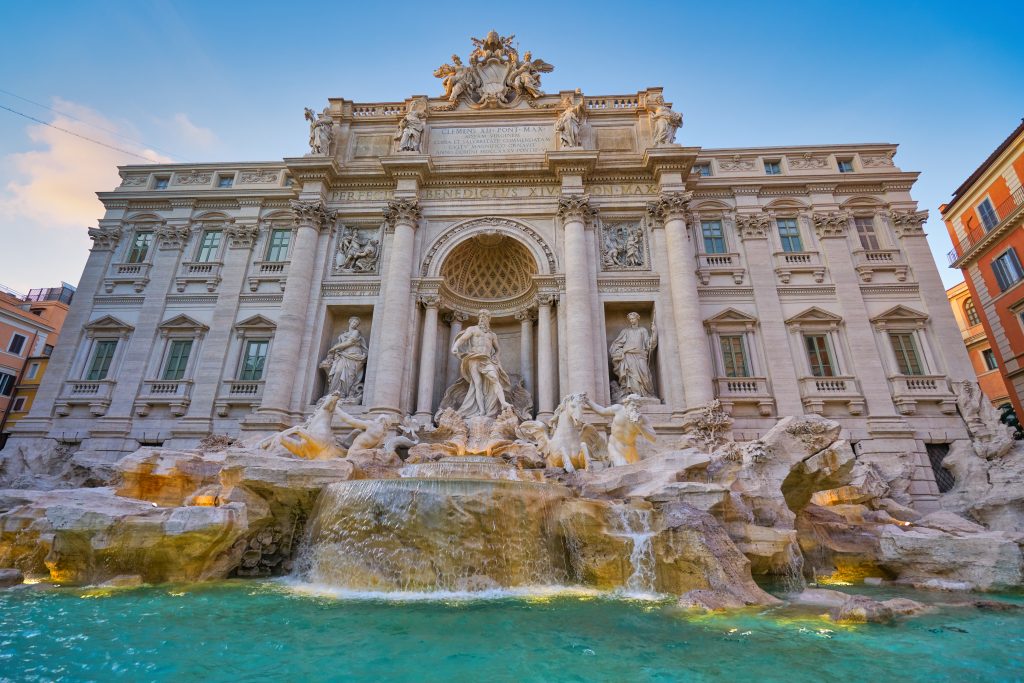
The Trevi Fountain is not just an ornament of the city - it is a lavish work of art that combines baroque theatricality, sculptural precision and deep symbolism. Each of its elements was designed to make an impression and tell a story.
💠 A performance in stone and water
The fountain was designed to look like a theater scene - The monumental facade of the Poli Palace becomes its backdrop, from which the sculptures "flow". In the center is the Neptune (Okeanos) - The god of the seas - on a chariot in the shape of a shell. On the sides, two tritons lead sea horses: one agitated, the other calm, symbolizing the The nature of water - powerful, but tameable. The whole thing teems with movement and drama - typical features of the Roman Baroque.
💠 Allegories and messages
A fountain isn't just about beauty - it's also about Pope's message of power and harmony with nature. The two main figures next to Neptune are personifications of Health and Abundance - referring to the benefits of water. At the top are reliefs depicting the legendary story of the discovery of the Aqua Virgo spring by Roman soldiers. Each of these figures is part of a larger story about the life-giving power of water, papal patronage and the triumph of civilization.
💠 The alignment of architecture and nature
The Trevi Fountain is also an excellent example of a dialogue between architecture and the elements. The murmur of the water, the flash of light on the cascades and the dynamic shapes of the sculptures make the place alive - it changes depending on the time of day and the weather. It is not a static monument, but continuous spectacle - and that's why it works so strongly on the emotions of visitors.
3️⃣ The tradition of coin tossing - what you should know
Fall in love with Rome from the best perspective:
👉 Viewpoints and terraces in Rome
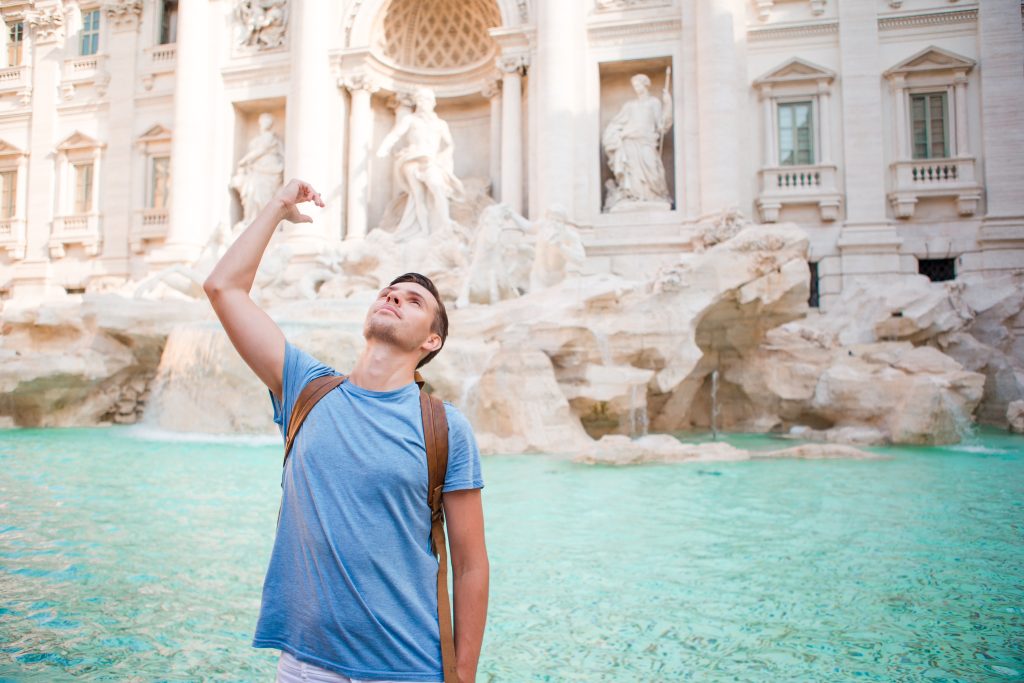
Throwing a coin into the Trevi Fountain is not just a tourist attraction - it's a symbolic ritual, which has gained international fame. For many, it is a magical gesture, for the city - real financial support, and for history - a beautiful tradition that has lasted for decades.
💠 Where did this tradition come from?
Although coin tossing appears to be an old Roman practice, the custom in its current form was not born until the middle of the 20th century, mainly due to the film Three coins in the fountain from 1954. Legend has it that if you throw in one coin - you will return to Rome. Two - you will fall in love with an Italian or Italian woman. Three - you will get married. Regardless of the version, The gesture has become part of a mandatory "ritual" every tourist.
💠 How to do it correctly?
Not only is it important co, but like. The coin should be dropped in With your right hand over your left shoulder, standing with his back to the fountain. This gesture is meant to resemble a ritual of wishing and symbolic return. Contrary to appearances - it is not about the value of the coin, but about the The intention and faith to return to the city of dreams.
💠 Where do the tossed coins go?
Every day even 3,000 euros In coins! The money is regularly fished out by special services, and the total is handed over to the charity, including to the Caritas organization, which supports the needy residents of Rome. Thanks to this small gesture of tourists takes on real meaning - it helps, instead of just wishing.
4️⃣ Interesting facts about the fountain
Admire the Eternal City with a glass of wine:
👉 Restaurants and view bars in Rome
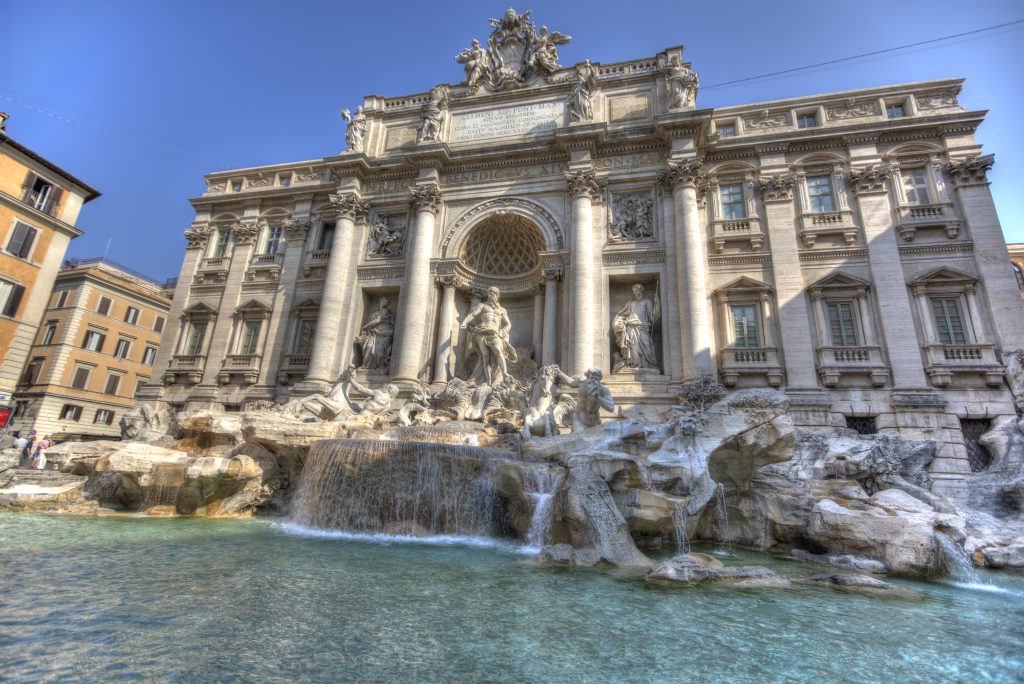
The Trevi Fountain hides many fascinating stories, surprising facts and non-obvious details that escape you during a quick tour. Here are a few that will make you look at the place in a completely different way.
💠 A fountain that was... unpopular
Although today it is an icon of Rome, in the 18th century the construction of the fountain was controversial. Some considered it too monumental, too theatrical, and even... too noisy. For a time, residents of nearby tenements complained that they could not sleep because of the noise of the water! Today it is hard to believe - the fountain has become an integral part of the Roman landscape.
💠 The hidden glass of protest
On the right balustrade, looking at the fountain, is a small marble sculpture of a glass. This is the so-called. "asso di coppe", a symbolic vessel erected by the architect Salvi. Apparently, this was a mischievous ploy - it was meant to obstruct the view of the fountain from the window of the owner of a nearby building, who publicly criticized the project. Architectural revenge? By all means.
💠 Movie magnet and tourist legend
The fountain has starred in dozens of films, but this scene from the La Dolce Vita (1960) with Anita Ekberg bathing in water made her a symbol of Italian sensuality and cinema. Since then, hundreds of tourists have tried to recreate the scene - unfortunately, today bathing in the fountain risks a hefty fine. But even without entering the water, The magic of cinema still hovers in the air.
5️⃣ Trevi Fountain in pop culture
It is hard to find another place in Rome that has played such an important role in world culture, cinema and literature. The Trevi Fountain is not only a monument - it is a An icon that has penetrated the collective imagination Worldwide.
💠 "La Dolce Vita" - a scene that went down in history
The most iconic fountain scene is undoubtedly the one from the movie "La Dolce Vita" (1960). directed by Federico Fellini. When Anita Ekberg steps into the water in a long gown and calls out to Marcello Mastroianni, the whole world falls in love with Rome - and the fountain. The scene has forever made her mark in the history of cinema and continues to attract film and photography enthusiasts today.
💠 Songs, animations and series
The Trevi Fountain has appeared not only in feature films. It is mentioned in songs by Frank Sinatra, featured in cartoons and even in episodes of such series as Lizzie McGuire whether Emily in Paris. Her image has become a universal symbol of dreams, romance and the Italian way of life.
💠 Motif in books and art
In literature, the Trevi Fountain often appears as a magical place - a turning point for the characters in a novel. In art, it is sometimes an inspiration for illustrators, painters and creators of travel posters. Her image is so culturally strongThat even people who have never been to Rome can recognize it at a glance.
6️⃣ When is the best time to visit the Trevi Fountain
Do you love the atmosphere of Italian piazzas?
👉 The 5 most beautiful squares of Rome you must see
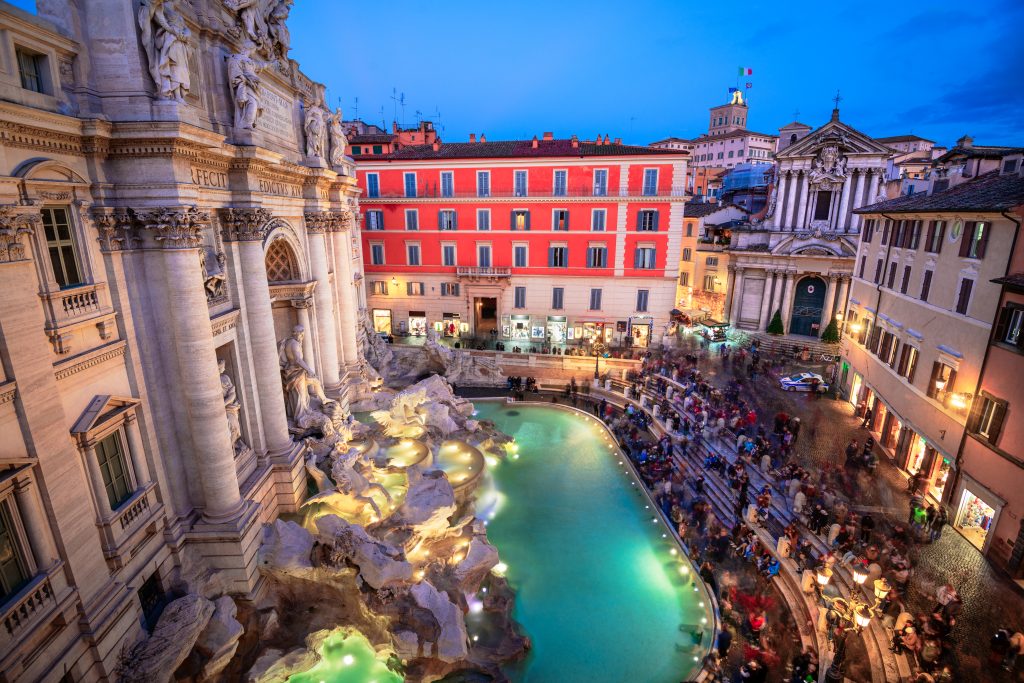
The Trevi Fountain draws crowds at any time of the year, but a properly planned visit can completely change your experience. Time of day, season and day of the week make a huge difference, if you want to feel the real magic of this place.
💠 Early morning - calm before the assault
The best time to visit is early morning, just after sunrise. Most of the tourists are still asleep, and the Trevi Fountain shines in the golden light of the morning. It's quiet, peaceful, without selfie-sticks and hustle and bustle. The perfect time for contemplation and beautiful photos without the crowd in the background.
💠 Evening - romantic lights and atmosphere
If you are not a morning bird, go there after dark. The illuminated fountain takes on a fairy-tale character - the sculptures are highlighted with warm light, and the sound of water sounds even more atmospheric. It's the perfect time for a romantic stroll or... making a wish with the toss of a coin.
💠 Avoid the high season and weekends
During the summer months (July-August) and on weekends the place can get really crowded. It's hard to have a peaceful experience or good photos then. If you can - go in spring or autumn, preferably in the middle of the week. Rome will still be beautiful, but Trevi Fountain will belong (almost) only to you.
7️⃣ How to get to the Trevi Fountain
Although the Trevi Fountain is located in the very center of Rome, squeezed between narrow streets, it may surprise you with its location. Getting there is part of the Roman adventure - A walk among cobblestone streets, old townhouses and hidden squares.
💠 The nearest metro station - Barberini
The most convenient way is to A-line metro, getting off at the station Barberini - Fontana di Trevi. From there you will have a short walk (about 7-10 minutes) through picturesque streets. It's worth abandoning the map and letting yourself be carried away -. The fountain "appears" suddenly and makes an electrifying impression.
💠 Walk from other sights
The fountain is not far from other well-known attractions. From the Pantheon you will reach in about 8 minutes, a From Spanish Square in 10 minutes. It's the perfect spot to visit during a walking tour of the historic center. Walking among the cafes, ice cream parlors and stores is an added bonus.
💠 Don't try to drive up by car
The center of Rome is restricted traffic zone (ZTL) - Car entry is limited or prohibited, especially during the day. Cabs can get you nearby, but it's best to plan your visit on foot or by public transportation. It's faster, more convenient, and more atmospheric.
8️⃣ What's nearby - other attractions nearby
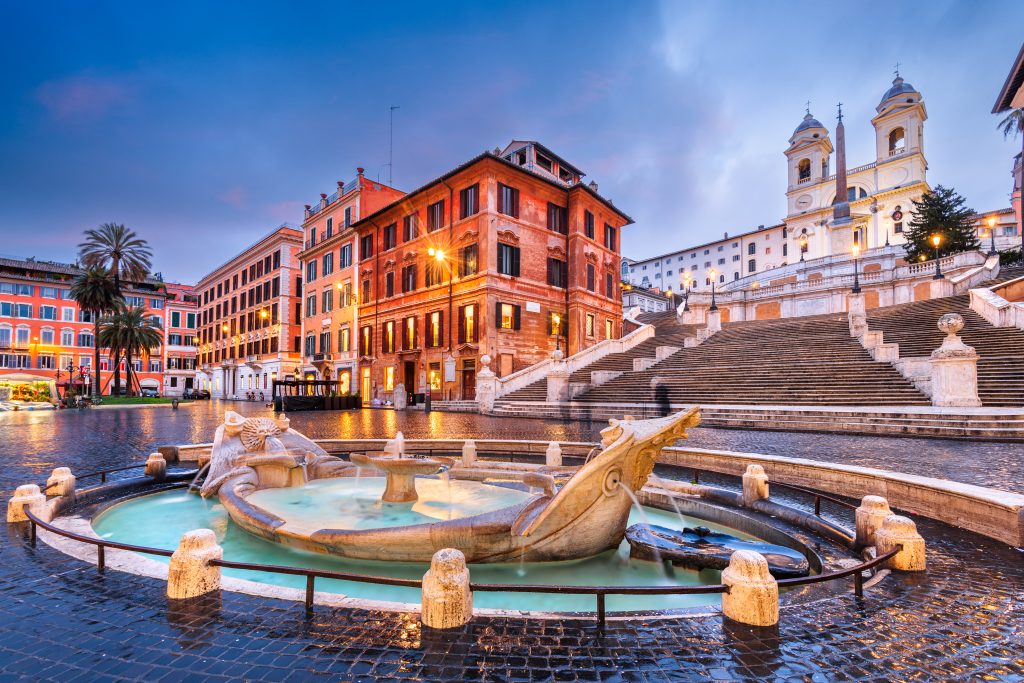
When visiting the Trevi Fountain, you don't have to end your tour - it's just the beginning! You'll find many other Roman gems within a ten-minute walking radius, which are worth seeing right away, taking advantage of the proximity of the location.
💠 Pantheon - an ancient masterpiece
Just 8 minutes walk from the fountain is the Pantheon - one of the best preserved buildings of ancient Rome. Rough on the outside, inside it impresses with its monumental dome and mystical light streaming in through the oculus. Entrance is free (although reservations sometimes apply), and inside you will find the tombs of famous Italians, including Raphael.
💠 Piazza di Spagna and the Spanish Steps
In the opposite direction, approximately 10 minutes by foot, you'll reach Piazza Spagna with its famous staircase leading to the Trinità dei Monti church. This is one of the most popular places to take photos and relax. In the area you will also find elegant boutiques and luxury stores, which form the prestigious Via dei Condotti.
💠 Via del Corso and surroundings - shopping and the vibe of the city
If you're in the mood for a moment of shopping frenzy or just a stroll down a bustling street, head to the Via del Corso - Rome's main shopping avenue. There you'll find stores, cafes and local delicacies, and the street itself leads further to Piazza Venezia and the Altar of the Fatherland. The perfect route for an afternoon walk After learning about the Trevi Fountain.
🏛️ Summary - the magic of Rome in one place
The Trevi Fountain is not just a tourist attraction - it's a the essence of roman charm, where history, art, legend and emotion meet. Whether you visit it in the morning in silence or in the evening in the glare of the lights, this place Leaves a mark in the memory of anyone who sees them.
Its power lies not only in the sculptures and architecture, but also in the way it affects the senses: the sound of water, the flicker of reflections, the murmur of the crowd, the quiet whisper of a wish as you toss in a coin... This is where the Rome reveals itself in full glory - with its romanticism, splendor and timeless beauty.
In a world full of places "to tick off", the Trevi Fountain remains the one really worth coming back to. And maybe that's what the coin is thrown in for - to feel the magic of Rome at least once more in one unique place.

